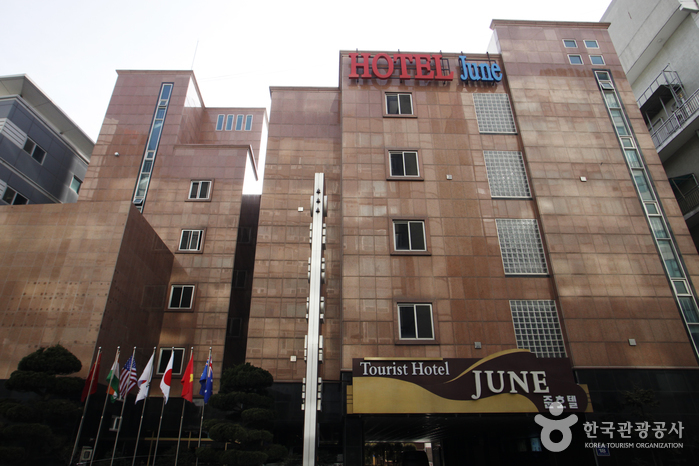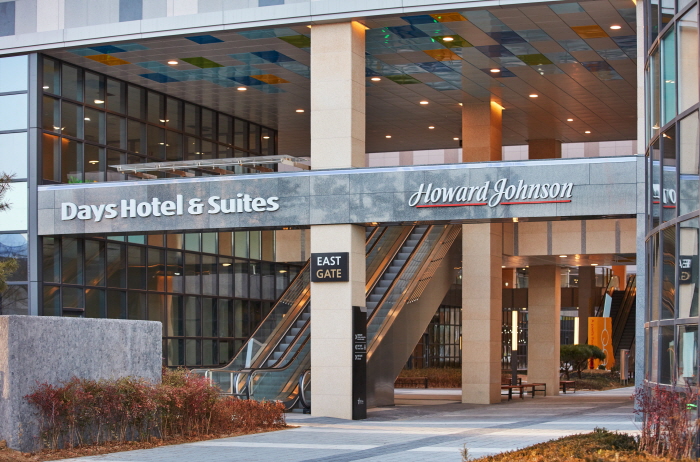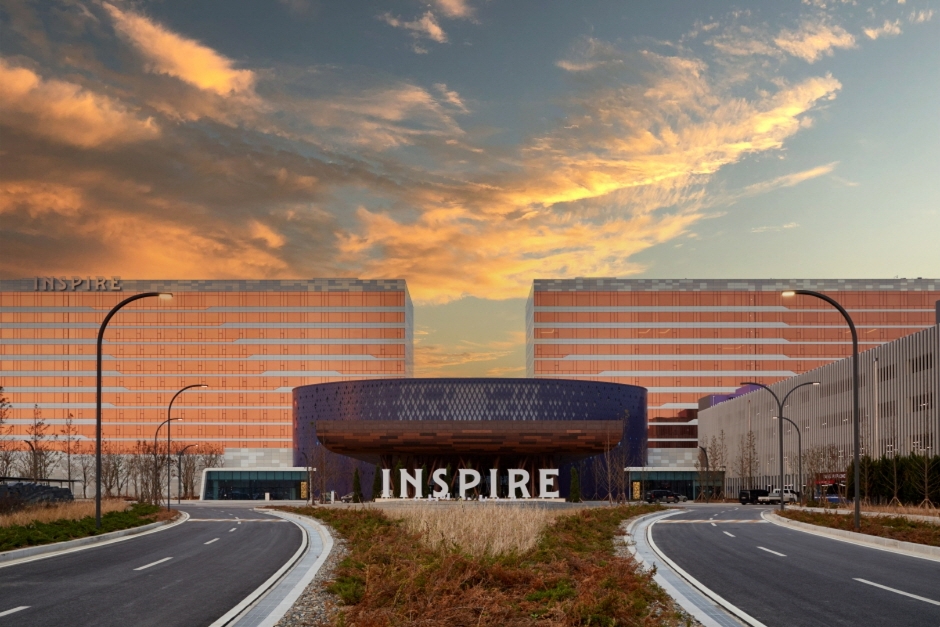Line Hotel / 라인호텔
18.5Km 2025-03-31
2337 , Gimpo-daero, Gimpo-si, Gyeonggi-do
+82-31-988-2234~6
The Line Hotel in Tongjin-eup, Gimpo-si, Gyeonggi-do, offers snug and clean accomodation with a variety of rooms types. Rooms are equipped with bathroom, Wif-Fi, AC/heater and fridge. There is a 24-hour information desk and luggage storage, laundry, and fax/copy services are offered. Gimpo Sculpture Park is 10 minutes away by car, and Deokpojin Fort and Hamsang Park are 20 minutes away. Guests can walk or drive along the beach, or drive across the Ganghwa Bridge to Ganghwa-do.
CheongKwanJang - Unseo Branch [Tax Refund Shop] (정관장 운서)
18.6Km 2024-04-18
#108, 137, Sindosinam-ro, Jung-gu, Incheon
-
Hotel June Incheon Airport (호텔 준)
18.6Km 2025-01-07
18, Sindosinam-ro 150beon-gil, Jung-gu, Incheon
+82-32-746-4417
Hotel June is named after the month of June, said to be a month of passion. Perfect for transit passengers, the hotel provides free shuttle services to and from the airport (roughly an 8-minute drive). In addition, the hotel employs a multilingual staff and offers free long-term parking and high-speed internet services.
Guestrooms at the hotel are decorated simply, but are cozy and come with all the latest facilities. At the 24-hour business center, guests can find desktop computers with high-speed internet, a fax machine, and other business services. The new concept fusion restaurant offers various international dishes and serves as a place of gathering among guests.
Days Hotel Incheon Airport / 데이즈호텔 앤 스위트 인천에어포트
18.6Km 2025-03-05
6 , Sindosinam-ro 142beon-gil, Jung-gu, Incheon
+82-32-722-3000, +82-32-722-0002
Days Hotel Incheon Airport is a residence hotel adjacent to Unseo Station on the Airport Railroad. All rooms are equipped with cooking facilities, washing machines, work desks, and dining tables, making them particularly convenient for longer-term stayers. Hotel facilities include an indoor swimming pool, billiards and table tennis rooms, a coin karaoke room, and a sauna. For families with children, cribs and bathtub are provided free of charge, and there is a play zone for kids. The business center is open 24 hours a day.
Howard Johnson Hotel Incheon Airport/ 하워드 존슨 인천 에어포트
18.6Km 2025-03-05
6 , Sindosinam-ro 142beon-gil, Jung-gu, Incheon
+82-32-722-0000, +82-32-722-0002
Howard Johnson Incheon at Incheon Airport on Yeongjongdo Island, Incheon, offers comfortable hotel-style rooms with wood-feature interiors, high-quality linen bedding and a sofa, desk and chair. Facilities include a restaurant, cafe & bar, plus billiard room, swimming pool, kids zone, business center, and concierge service. There is a shuttle bus to and from Incheon International Airport, while Eurwangni Beach and Yeongjong Seaside Park are 25 minutes away by car.
Olive Young - Unseo Station Branch [Tax Refund Shop] (올리브영 운서역)
18.6Km 2024-04-22
6, Sindosinam-ro 142beon-gil, Jung-gu, Incheon
-
Innisfree - Unseo Branch [Tax Refund Shop] (이니스프리 운서)
18.6Km 2024-04-18
#117, 45, Huinbawi-ro, Jung-gu, Incheon
-
Lotte Himart - Yeongjong Branch [Tax Refund Shop] (롯데하이마트 영종점)
18.7Km 2024-06-26
51, Huinbawi-ro, Jung-gu, Incheon
-
Yeongjong Grand Bridge (영종대교)
19.4Km 2022-07-26
Jangdo Island (Gyeongseo-dong, Seo-gu, Incheon-si) ~ Yeongjongdo Island (Unbuk-dong, Jung-gu, Incheon-si)
Yeongjongdaegyo Bridge connects the mainland of Incheon with Yeongjongdo Island that is home to the Incheon International Airport. Until the construction of this bridge, the only way to get to and from Yeongjongdo Island had been by boat. The 4.4 kilometer-long Yeongjong Bridge is the world’s first 3-dimensional self-anchored suspension bridge. The bridge carries both highways and rail lines on its decks, and 10,000-ton ships can pass under the bridge. The bridge was designed to withstand strong winds and earthquake.
It is the first bridge in Korea to have been completed through private capital inducement project. In addition to its function as a bridge, it is also an architectural beauty as the shape of the cable and the girder was designed to symbolize the eaves of the traditional Korean tile-roofed house. In 2002, Yeongjongdaegyo Bridge won the Tanaka Award by the Japan Society of Civil Engineers for the first time in Korea.
Inspire Entertainment Resort (인스파이어 엔터테인먼트 리조트)
19.4Km 2025-06-05
127 Gonghangmunhwa-ro, Jung-gu, Incheon
Inspire Entertainment Resort is a grand resort complex comprising a variety of amenities and entertainment. It has a five-star hotel that consists of three buildings, each uniquely designed with a concept of its own. The resort also features Korea's first-ever 15,000-seat performance arena, an indoor water park roofed with a glass dome, and a banquet hall consisting of cutting-edge equipment and the largest hotel ballroom in Korea. In addition, the resort also has an outdoor entertainment park that can accommodate a maximum of 30,000 people, Korea's largest foreigner-only casino, a 150-meter digital entertainment street with stunning LED decor, and other leisure amenities.
![CheongKwanJang - Unseo Branch [Tax Refund Shop] (정관장 운서)](http://tong.visitkorea.or.kr/cms/resource/80/2882780_image2_1.jpg)



![Olive Young - Unseo Station Branch [Tax Refund Shop] (올리브영 운서역)](http://tong.visitkorea.or.kr/cms/resource/78/2882778_image2_1.jpg)
![Innisfree - Unseo Branch [Tax Refund Shop] (이니스프리 운서)](http://tong.visitkorea.or.kr/cms/resource/79/2882779_image2_1.jpg)
![Lotte Himart - Yeongjong Branch [Tax Refund Shop] (롯데하이마트 영종점)](http://tong.visitkorea.or.kr/cms/resource/84/3313284_image2_1.jpg)


 English
English
 한국어
한국어 日本語
日本語 中文(简体)
中文(简体) Deutsch
Deutsch Français
Français Español
Español Русский
Русский